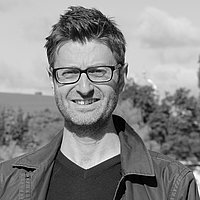Three members of the Cluster of Excellence RESOLV attended last October the renowned Solvay-Conference on Chemistry in Brussel, an event open to invited scientists only. Prof. Dr. Martina Havenith, speaker of RESOLV at RUB, Prof. Dr. Frank Neese, director at the Max-Planck-Institute for Energy Conversion, and Prof. Dr. Benjamin List, director at the Max-Planck-Institute for Coal Research, both based in Mülheim an der Ruhr, were among the fifty attendees.
Belgian chemist and industrialist Ernest Solvay, the founder of the chemical company Solvay S.A., initiated the first series of international conferences on physics in 1911, while the first meeting on chemistry occurred in 1922. Since then the Solvay-Conferences on Chemistry and Physics had been held every three years. The conferences have become extremely famous after the 1927 physics meeting on ´Electrons and Photons´, when Albert Einstein and Niels Bohr, among others, met to discuss the newly forged quantum theory.
The 2016 meeting evolved around the theme ‘Catalysis in Chemistry and Biology’. We briefly interviewed Havenith, List and Neese about their experience in Brussels.
Q: What was your impression of the conference?
Martina Havenith: It was very impressive for many different reasons. First of all, it’s rare to see five Nobel prize winners together! – and it’s even rarer that they are listening to your ideas and discussing the future direction of chemistry. Besides, it was an intimate meeting, and we had much more time than usual for discussions. It was also remarkable to witness the special engagement of an industrial family into science. And it was impressive to read the names of Albert Einstein and Marie Curie in a guestbook!
Benjamin List: One of the best conferences I have ever attended!
Frank Neese: The conference was unlike any other I have ever attended. There obviously is an impressive history associated with Solvay conferences and it was a major honor to be invited to participate. It takes place in a fairly unique setting in a beautiful historic hotel in Brussels with a closed circle of only invited international speakers and an outstanding accompanying program. The format is also different from usual: The talks are just ten minutes long and the discussion takes first place among the members of the session, only later it involves the other guests.
Q: What was the take-home message? How was solvation science portrayed?
Martina Havenith: This meeting focused on the main challenges in catalysis. It was not about the details of the field but it rather provided a big picture of what we have learned in the past and what is still unclear. Most interesting for RESOLV: In the end it was noted that the solvent has not yet been taken much into consideration, but in the future we should have a closer look into it and its important role in catalysis.
Benjamin List: I was able to identify three unifying principles of catalysis – including heterogeneous, homogenous organic and metal catalysis, and biocatalysis: 1. Turnover frequency (an index of a catalyst’s activity: The larger the frequency, the more active the catalyst); 2. Confinement (a well-defined and confined local environment of a catalyst’s active site); and 3. Solvation! Everybody in the field is aware of the unique relevance of solvation to catalysis – understanding this defines one of the grand challenges of the field.
Frank Neese: It became very evident that an open dialogue among the various disciplines of catalysis, in particular homogeneous and heterogeneous catalysis, is really needed. At the end of the day, the problems are the same (what are the intermediates? How is selectivity controlled? How is the energy loss minimized?). Yet vocabulary, cultures and challenges of the various disciplines are vastly different, hence there hardly can be any 1:1 transfer from one field to the other. However, it was interesting to see how biochemists have achieved the most detailed understanding of individual reaction mechanisms in biological catalysis. That’s partially because they are willing to devote their entire career to study few reaction mechanisms and to involve experts from neighbouring disciplines in the endavour. Clearly, quantum chemistry has evolved as a very powerful partner of experiment and it’s becoming a universal tool for catalysis research as a whole.
————————————————————————————————————————————
About the author





